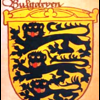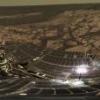Кения-колонизация
-
Последна активност
-
Тръмп - Европа и войната в Украйна. Какво да очакваме? 1 2 3 4 23
От nik1, in Руско-украинската война 2022 година.
- 567 мнения
- 26254 прегледa
-
- 84 мнения
- 10451 прегледa
-
- 393 мнения
- 9559 прегледa
-
- 1 мнение
- 134 прегледa
-
Ratings data proves Australian game shows attract sizeable audiences despite streaming services
От AustralianGameSh, in Възраждане
- 0 мнения
- 12 прегледa
-
-
Последно разглеждащи 0 Потребители
- No registered users viewing this page.




Препръчано мнение
Напиши мнение
Може да публикувате сега и да се регистрирате по-късно. Ако вече имате акаунт, влезте от ТУК , за да публикувате.